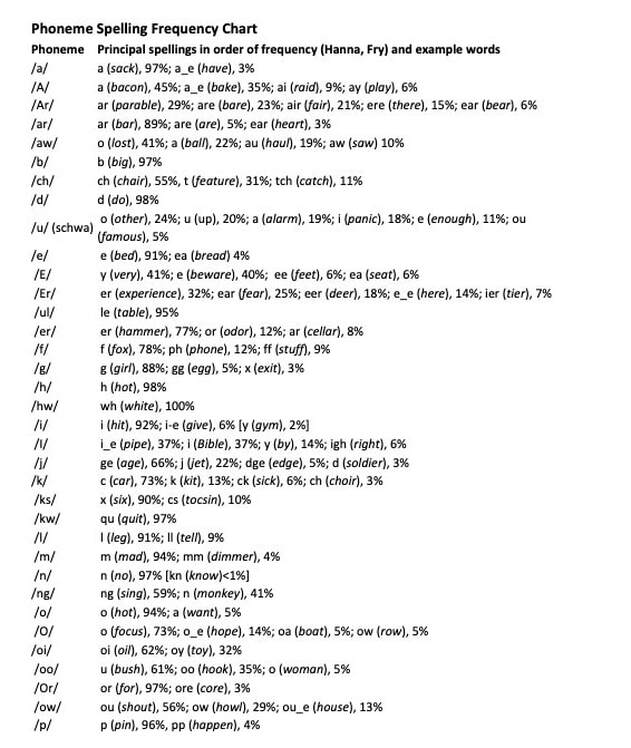|
I love statistics: they’re fun, fascinating, and shed light on the world around me. For example, an average day, American men still do much less housework than American women (19% to 49%). Over the last 50 years, the average size of the American home has nearly tripled in size, yet 1 out of every 10 Americans rent offsite storage and 25% of all people with a two-car garage don’t have room to park even one car inside it! Statistics also inform my teaching. For instance, over the last few months I’ve been mulling over the frequency of phoneme spellings. Consider this: the Long O sound is spelled much more frequently with an open syllable (as in go, hero, and open) than vowel-consonant-E (as in hope, stone, and invoke). Specifically, the Long O sound is spelled open syllable 73% of the time while O-consonant-E is used 14%. Is this an interesting but useless fact? Not at all. Knowing the frequency of phoneme spellings can help teachers more effectively teach spelling and phonics. Frequent phoneme spellings The most common spellings of the 44 English language phonemes were originally explored and cataloged in 1966. In a study still available through JSTOR (citation below), researchers considered 17,000 of the most frequently occurring words in English. Later, the now famous word researcher Edward Fry revised the research, putting the results into more clearly understood tables and answering this question: what are the most useful (highest frequency) phoneme-grapheme correspondences? I first learned of Fry’s most frequent phoneme spellings while doing research for my 2017 Stenhouse book, Super Spellers. Lately I’ve been using the information to help me construct the effective spelling-phonics scope and sequence that I’m using in two curriculum projects. Below this post is a table that “paraphrases” Fry’s summarization. I find it not only valuable but also often surprising. For example:
To statistic lovers, the phoneme spelling frequency table is interesting. But to teachers it is super valuable because it shows us the letter patterns most advantageous for primary grade reading and writing. Said another way, the chance of primary grade reading and spelling success increases when we de-emphasize or avoid the rare spellings that take up instructional time but are of little use to readers and writers at a less advanced level. For example, let’s consider those Long O spellings I mentioned earlier. Remember, 73% of words with the Long O sound are spelled with an Open Syllable O while 14% use O-consonant-E. How does this inform my instruction? When it comes time to teach the various vowel-consonant-E spellings, it means that, sure, I will focus on O-consonant-E. But I won’t focus on O-consonant-E for too long because I’ll want to quickly move to the important open syllable O spelling, which allows students to spell and read words such as no, go, also, silo, hero, zero, hello, bonus, focus, open, over, program, protect, rotate, locate, motion, lotion, radio, studioand many others! Here are some of the principal spellings in order of frequency, along with example words. Note: it is important to pay attention to the example words because the phonemes are not represented with the additional “sound markings” that Fry included. Also note that some spellings are so infrequent, such as /er/ sound spelled IR, that they are not included on the chart. For the complete chart, go to the "File Cabinet" tab of this website and download the PDF, which is the second file in the left hand column. Summary Information on spelling frequencies allow us to identify and then focus on what is most important for foundational reading skills. The big idea is often times the most frequent sound spellings are the most useful for the early development of reading and writing skills. When we identify and focus on frequent spellings, our students have a greater chance of mastering spelling in general, which then helps them become more fluent readers. In my next post, I’ll consider what the frequency of sound spellings means in relationship to a couple of actual spelling scope and sequences: one used by the Jolly Phonics program (for emerging readers and writers) and the one I’m making for use in my curriculum projects. Sources
|
Mark WeaklandI am a teacher, literacy consultant, author, musician, nature lover, and life long learner.
|

 RSS Feed
RSS Feed